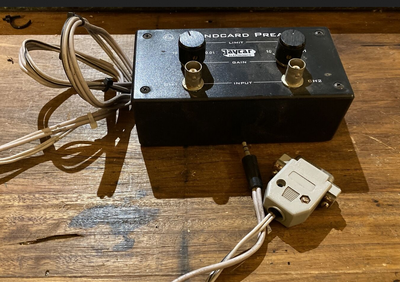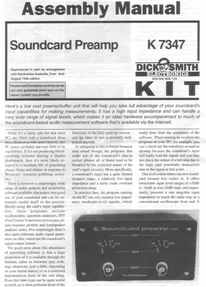First post, by Jo22
- Rank
- l33t++
Hi everyone,
Just saw something fascinating that I'd like to share.
This page contains some examples of what you can do with a supposedly "inferior" analogue gameport.
https://www.ardent-tool.com/misc/Joystick_Metrics.html
While this topic isn't exactly new to me, I've found this article of old times very interesting.
You can do even more than the examples mentioned in that article (as it says itself).
(The original IBM Game Control Adapter had a provision for experiments, even.
There's a spare area on the PCB for the user's own projects.)
For example, you can read the digital buttons and have an PC-based alarm system.
Or build a model train railyway system with sensors. Reed relays (or other switches) and some wire is all it needs.
And Quick Basic 4.0+, if possible - STICK() or STRIG() support the game port directly.
Humble QBasic supports it, too, but at this point, the MS Game Shop is an alternative to consider.
Or, let's have a look at Power Basic and it's predecessor, Turbo Basic 1.0!
Visual Basic for DOS and PDS 7 are worth a look, too.
There's so much you can do! 🙂
For example, someone even wrote an SSTV software to decode tape recorded black/white pictures through it.
Another author had once built a b/w picture scanner, by using a matrix printer to move the scanner circuit (photodiode, pair of LEDs).
Tip: If your development PC is too fast, you can press the turbo button or use a throttle utility
- or go for a hardware mod and change the four 100 nF condensers on your game card by something bigger.
"Changing" isn't the right term, maybe, though.
You can add some extra condensers in parallel to the original ones, to increase capacity.
Doing the mod can also help with the time constant (tau).
By an enlargement of the capacitors, the measuring range can be increased, while simultaneously the resolution goes down a bit.
- That's good to know for owners of higher end PCs with V20/30 or 8086 processors.
Tip: You can use the gameport as an output, too!
Yup, it really works. It's a bit of cheating, though. And no, MIDI isn't being involved. 😉
If you're afraid of ruining your precious game port card, you may consider a a replica. Such things really exist.
Have fun! 😃
Best wishes,
Jo22
PS: If you're happen to be a Turbo Pascal fan, you're in luck.. 😀
"Time, it seems, doesn't flow. For some it's fast, for some it's slow.
In what to one race is no time at all, another race can rise and fall..." - The Minstrel
//My video channel//

